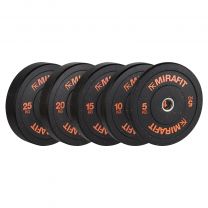Learn to deadlift with Britain’s Strongest Man, Terry Hollands
Learn to deadlift with Britain’s Strongest Man, Terry Hollands

If weightlifting were to be summed up in a single exercise, it would be a deadlift. Stripped back to its purest form, a deadlift is your ability to grip a weight on the floor, lift it, and put it back down.
Easy, right? Don’t let its visual simplicity fool you. The deadlift is a highly technical movement, engaging a whole range of muscles from your shoulders to your back and legs. It’ll test your grip, challenge your stability, and zap your energy with every rep.
But, performed correctly, the deadlift is one of the most effective weightlifting exercises to strengthen your posterior chain, making it the go-to movement for your day-to-day muscle powerhouse.
Should I deadlift?

Absolutely.
There’s no demographic for deadlifts. Whether you’re training to be a strongman or woman, in the gym for fun, or you’re looking to tone up, there’s a good chance you’re going to see huge benefits from incorporating this explosive compound lift into your training routine.
Risks and rewards

Before you go loading up the plates and pulling your new personal best, it’s essential to understand the rewards of deadlifting, where you’ll see changes or improvements, and most importantly, any risks associated with the exercise.
The benefits
The posterior chain. We’ve mentioned it before, but why should you train it, and what can a strong posterior chain do for your body?
The posterior chain refers to all the muscles on the back of the body, from the back of your head down to your heels, and it includes vital muscles like your hamstrings, glutes, calves, lats, rotator cuff muscles, and spinal erectors. Simply put, the posterior chain includes some of the largest and strongest muscles in your entire body — and they’re often overlooked.
By adding deadlifts to your workout routine, and by strengthening your posterior chain, you could:
• Lift heavier
• Run faster
• Reduce injuries
• Improve posture
• Lose weight
The dangers
The deadlift is a big compound lift, and that means two things. One, you’re going to see many benefits from doing them. And two, if done incorrectly, you could injure or impinge important muscles that support your everyday ability to stand up from the sofa.
It’s imperative that you pay close attention to your form during the early stages of your deadlift development, and avoid what weightlifters like to call “grip and rip”. Take your time, and put good form above power until you’re ready to move up.
While everyone should try to include deadlifts into their routine, not everybody can. Just like our minds, our bodies are unique, and we all feel pain or pressure at different times. Listen to your body, and if at any point you feel uncomfortable, stop, and try to speak to a qualified trainer.
Mastering the deadlift with Terry Hollands
Performing such a complex exercise safely requires expert knowledge. That’s why we had Britain’s Strongest Man, and 2019 Masters World’s Strongest Man, Terry Hollands, put together this comprehensive guide to help you master the deadlift.
Check out this video with Terry’s top tips for deadlifting and which common errors you should avoid.
Upgrade your lift
Once you’re confident in your deadlift technique, you’ll be smashing personal bests weekly. But, as the weight gets higher, so do some of the risks and the challenges you face. Before you give in and let your grip or your back support get the better of you, consider adding a weight belt to your workouts.
You’d be surprised the difference a Weight Belt can make to your deadlift. Once you start reaching the limits of your ability, secure a snug-fit belt around your core, breathe into your stomach, and press against the belt with your abs as you lift. You’ll add more weight in no time.
For more content, follow us on Instagram, YouTube, TikTok, and on our official Mirafit Facebook page.
Enter your email to signup to our newsletter
Tags: Equipment > Bars & Weight Plates ; Exercise Type > Strength








